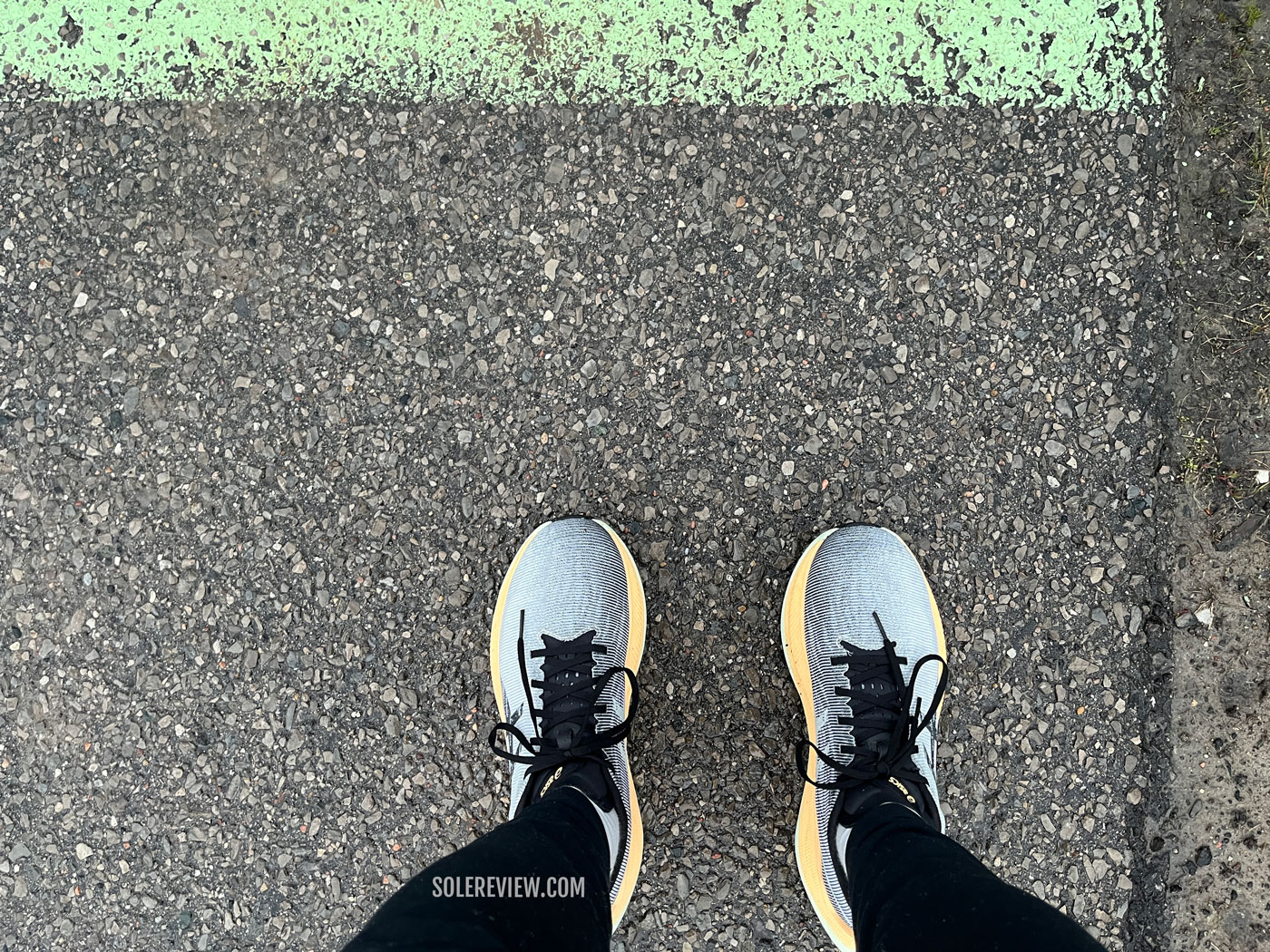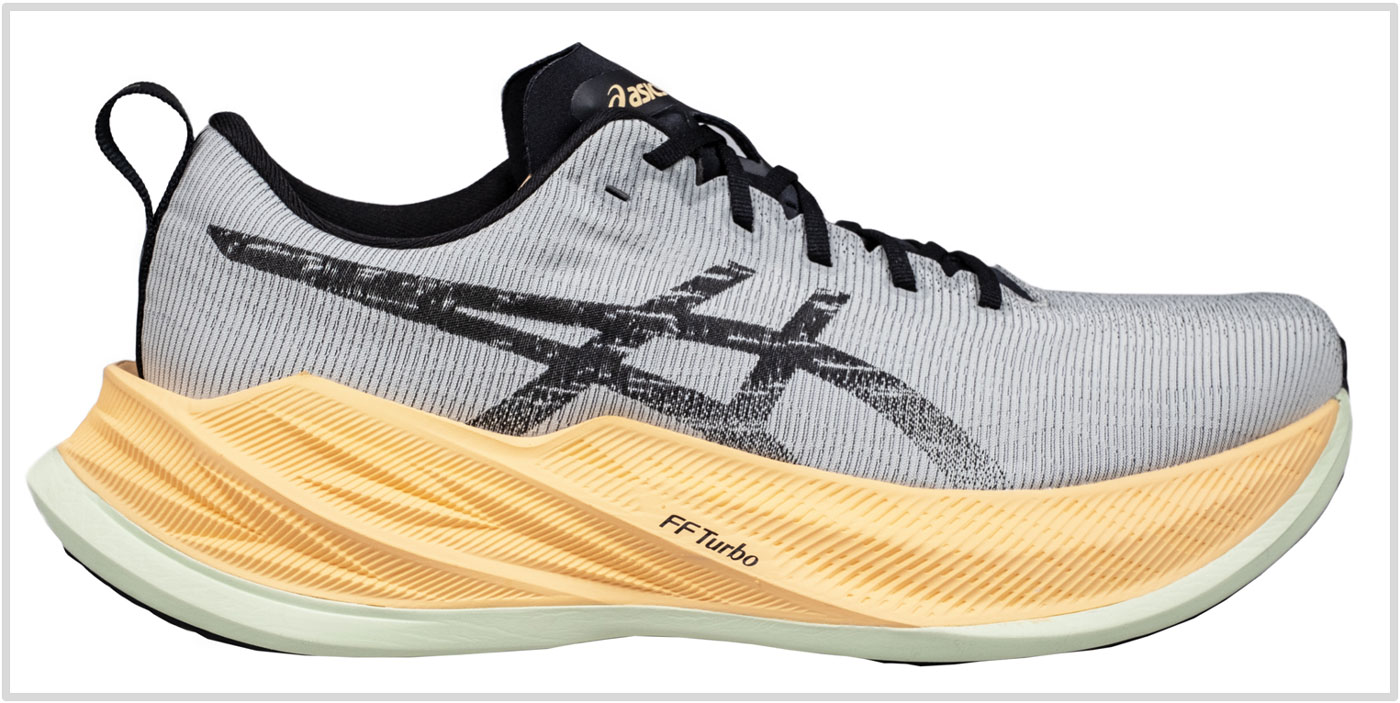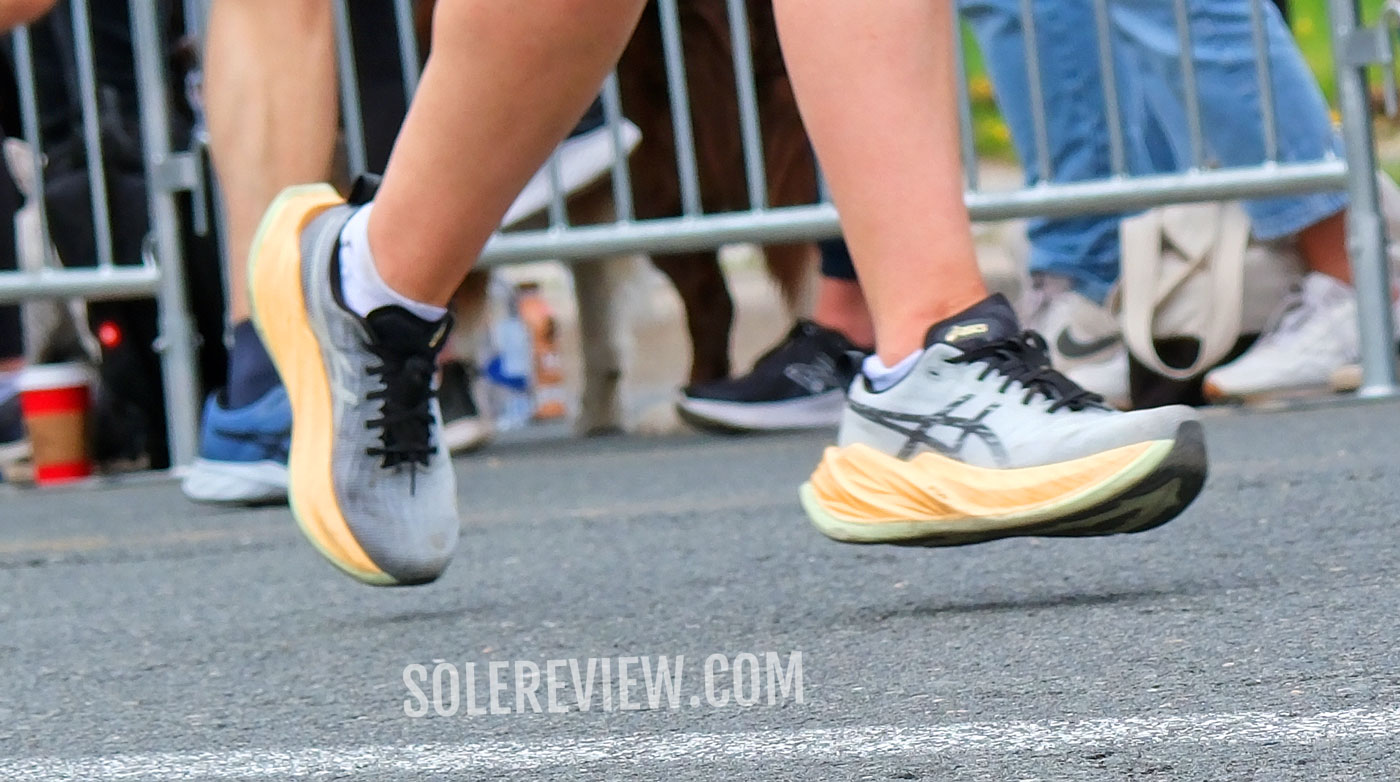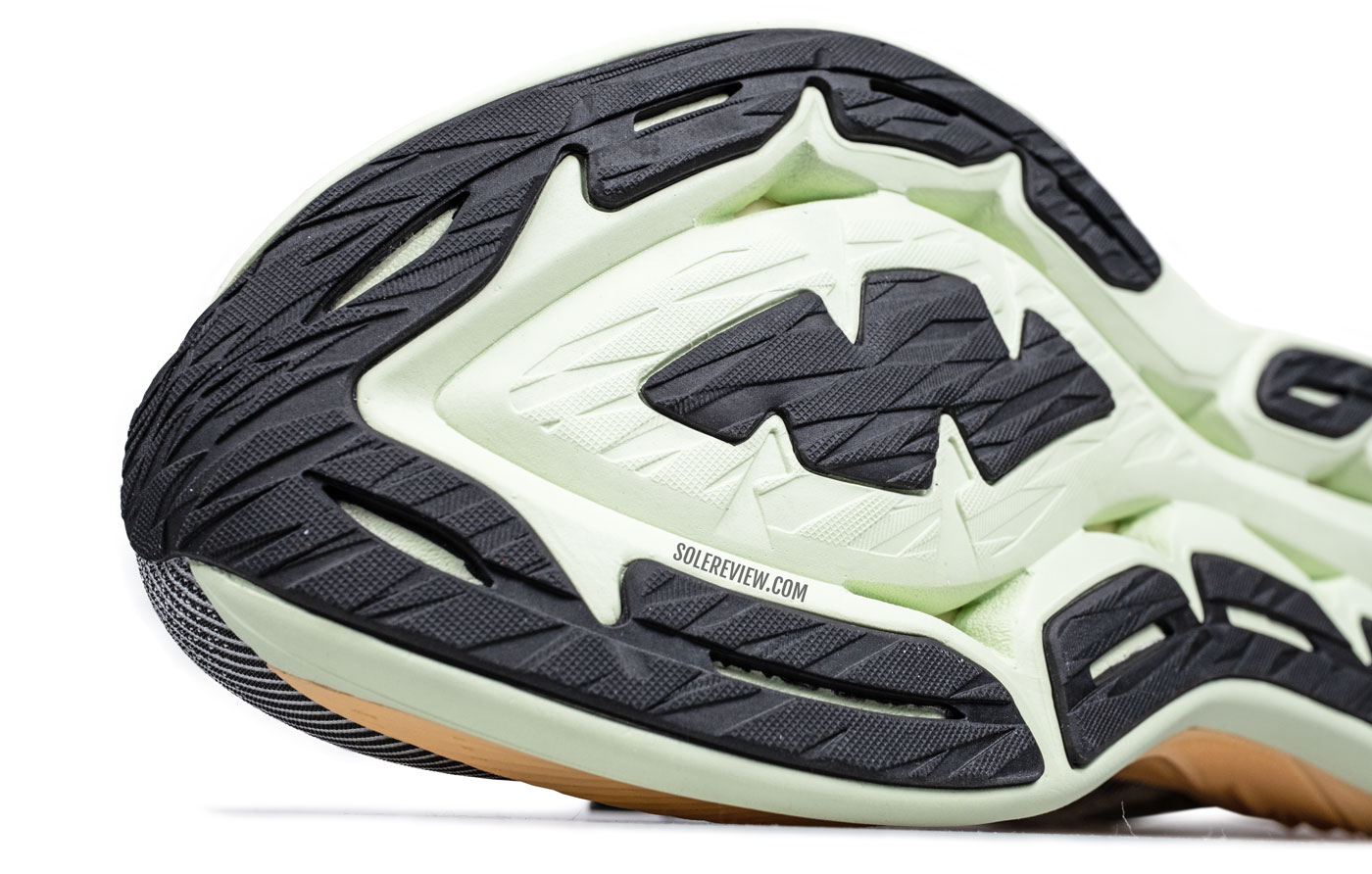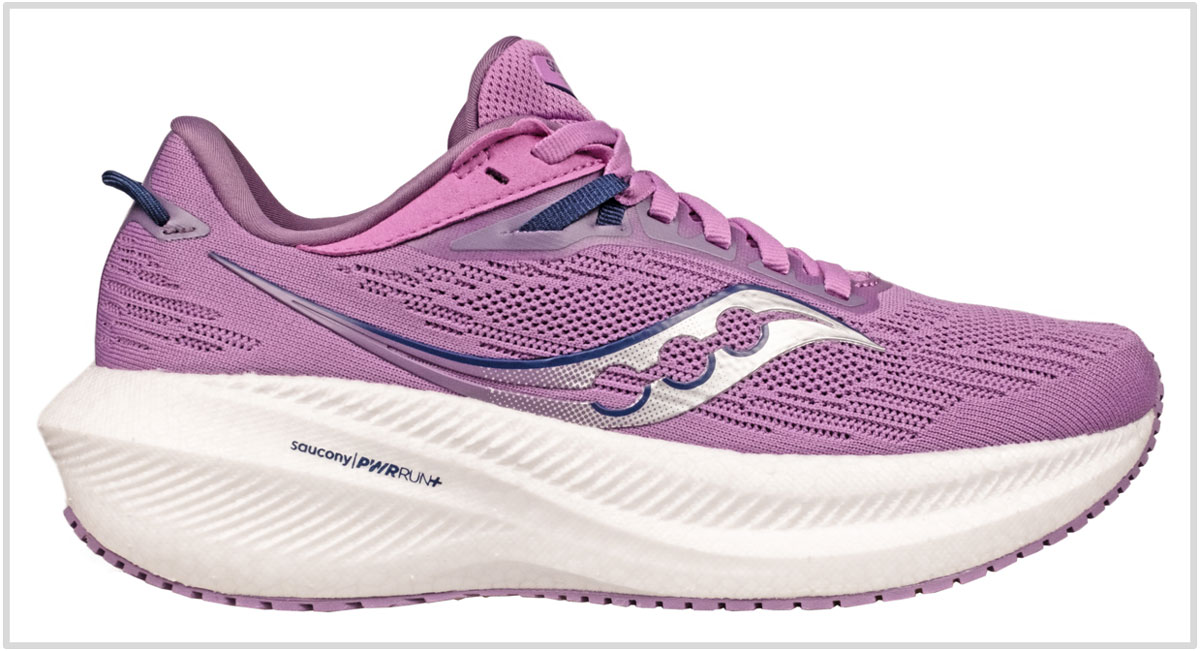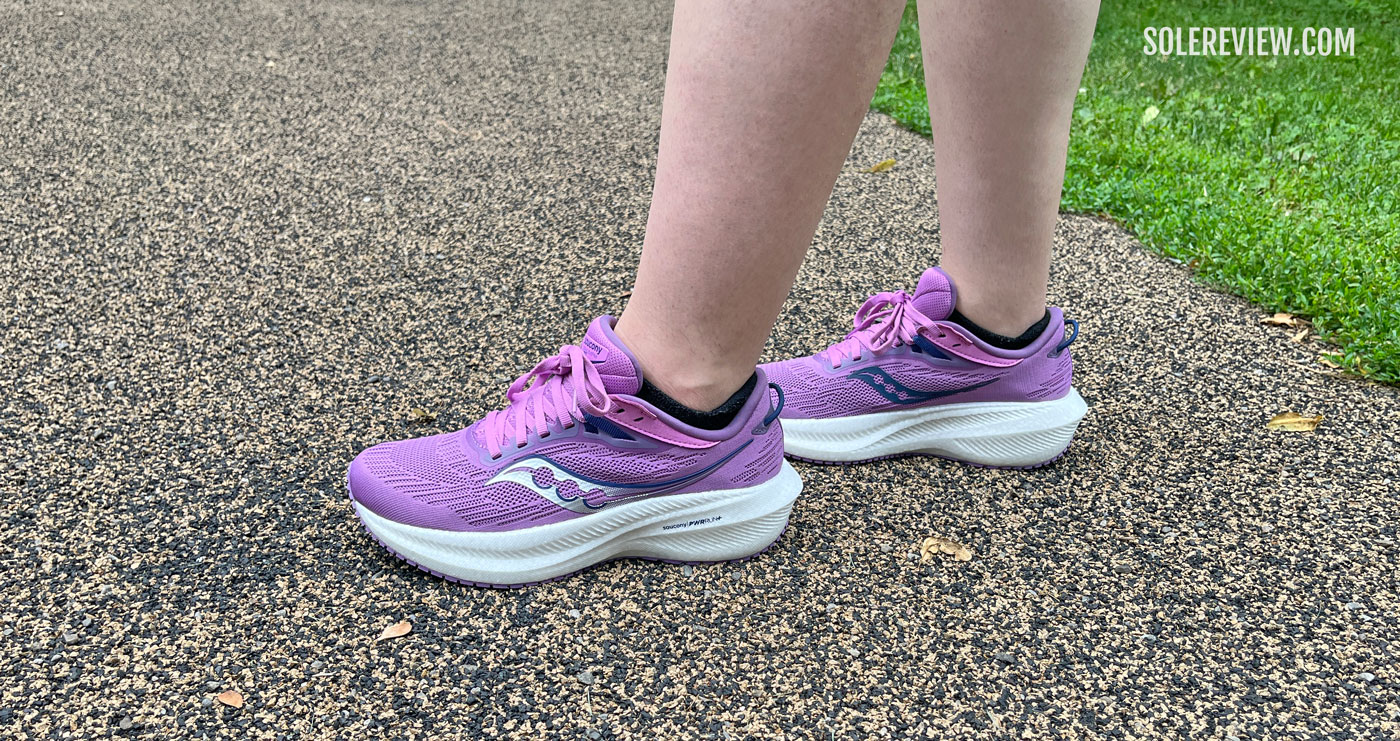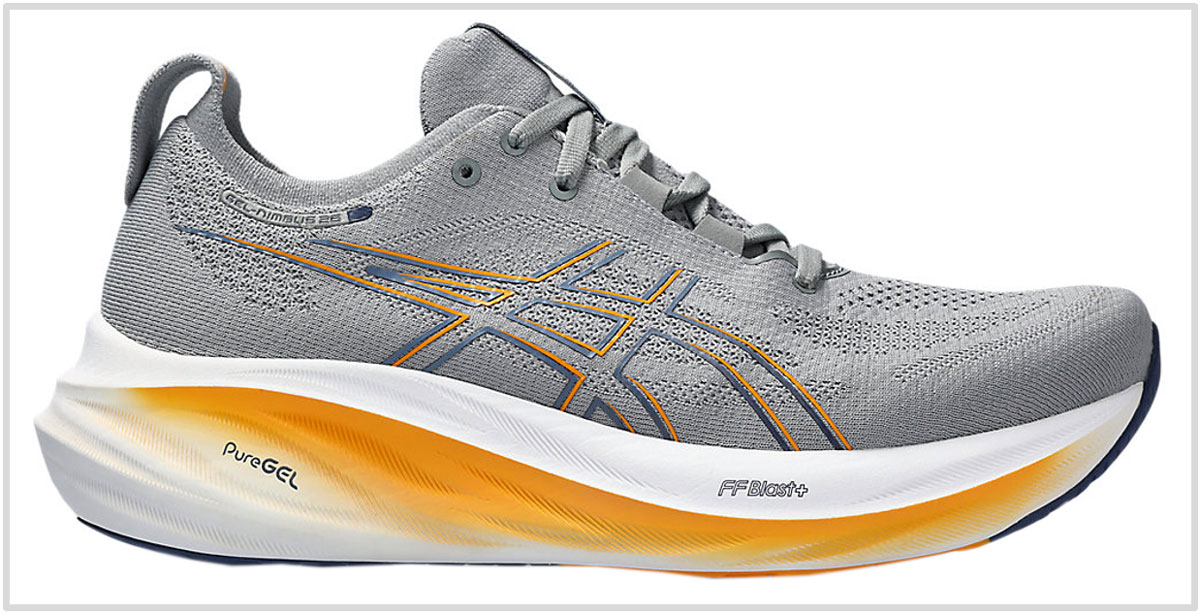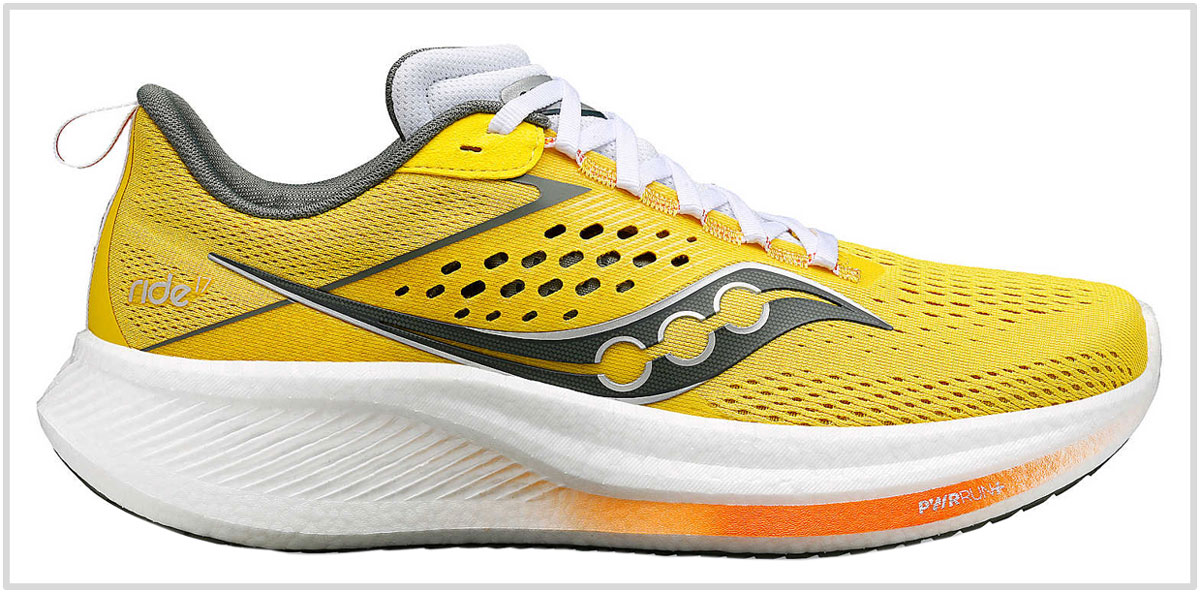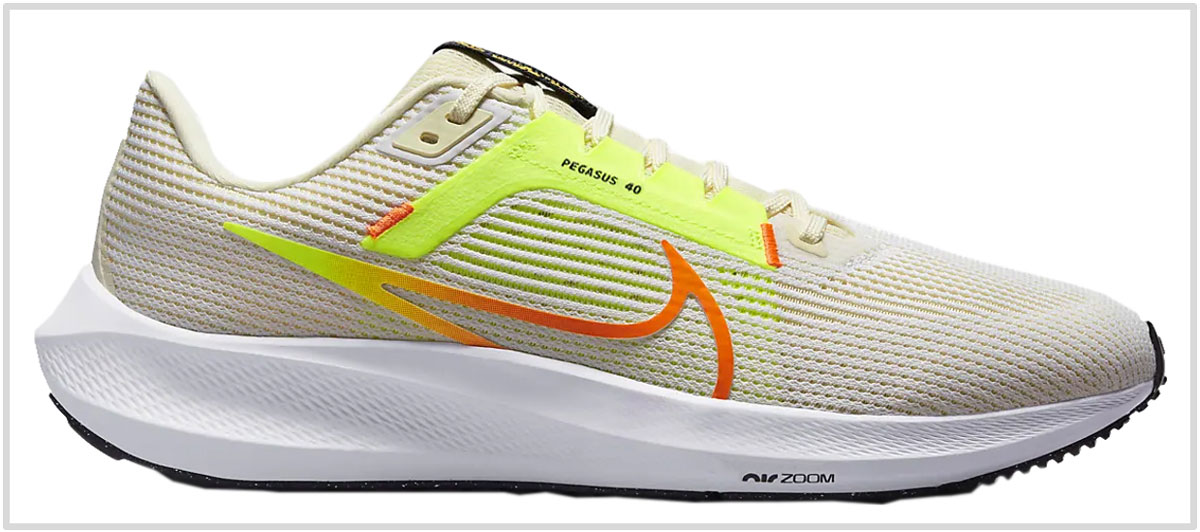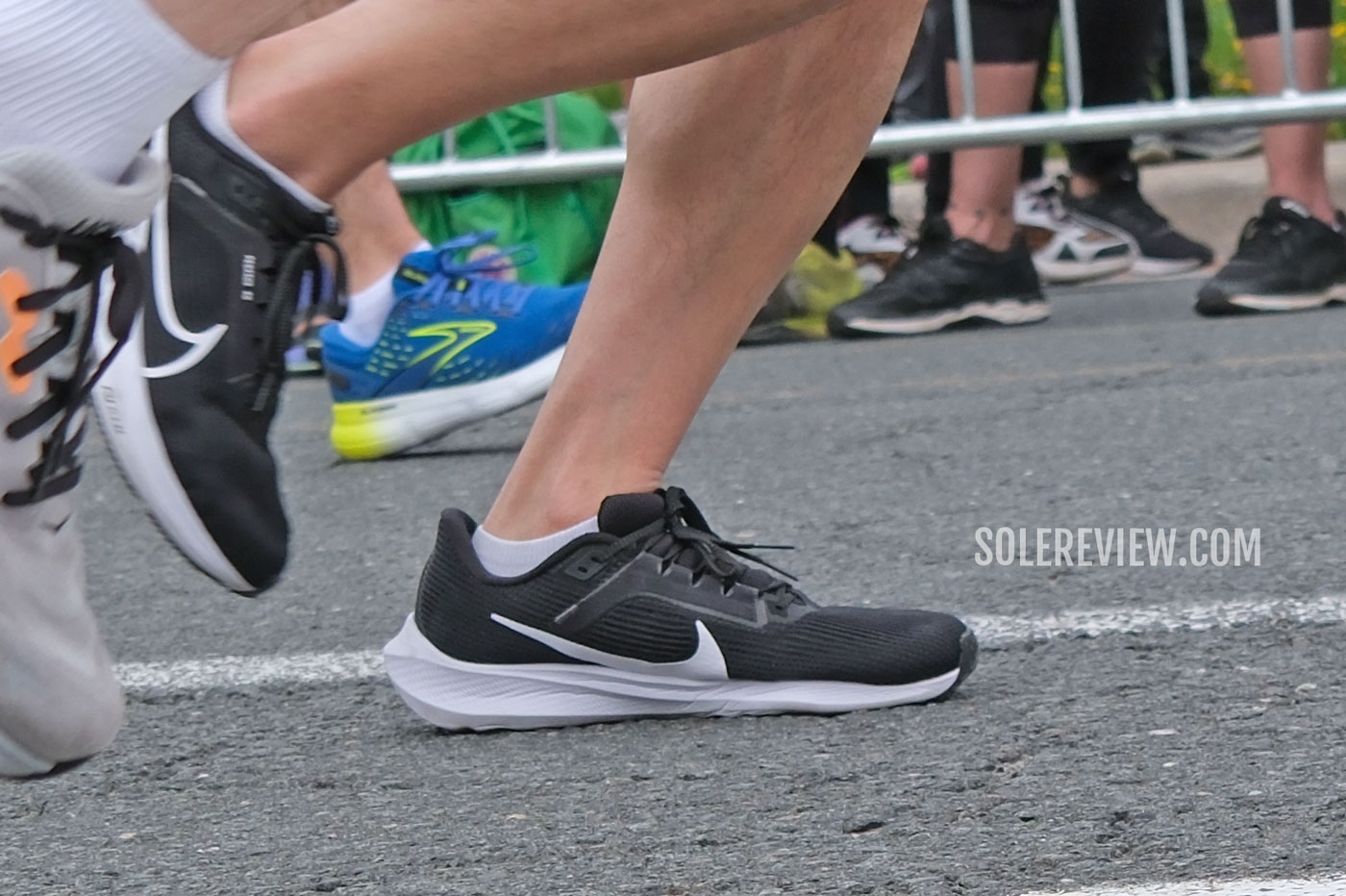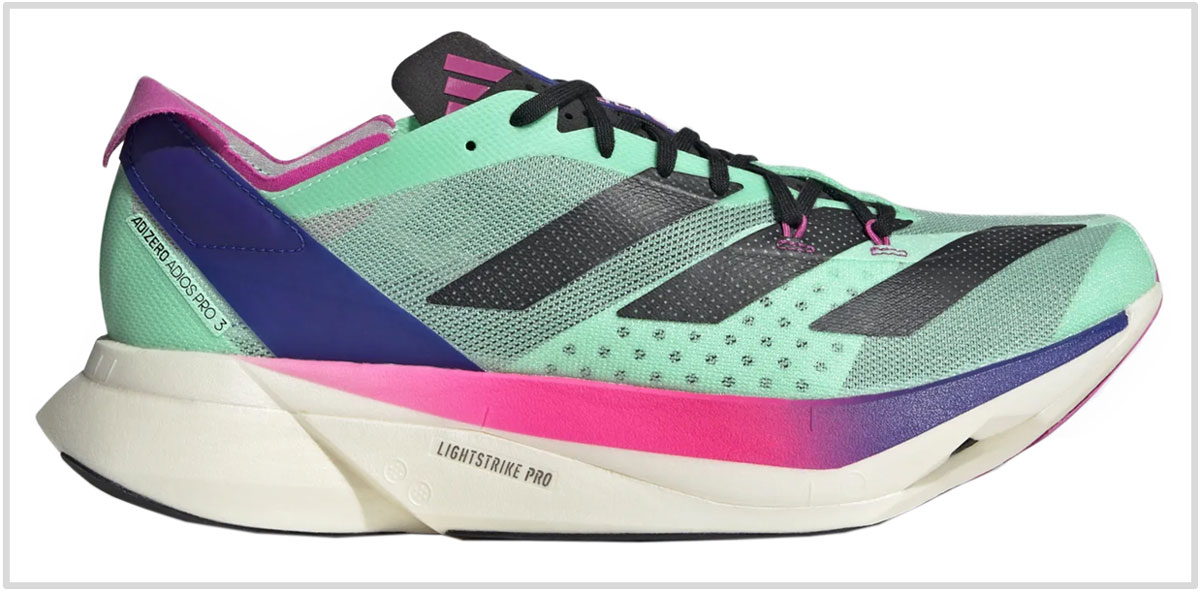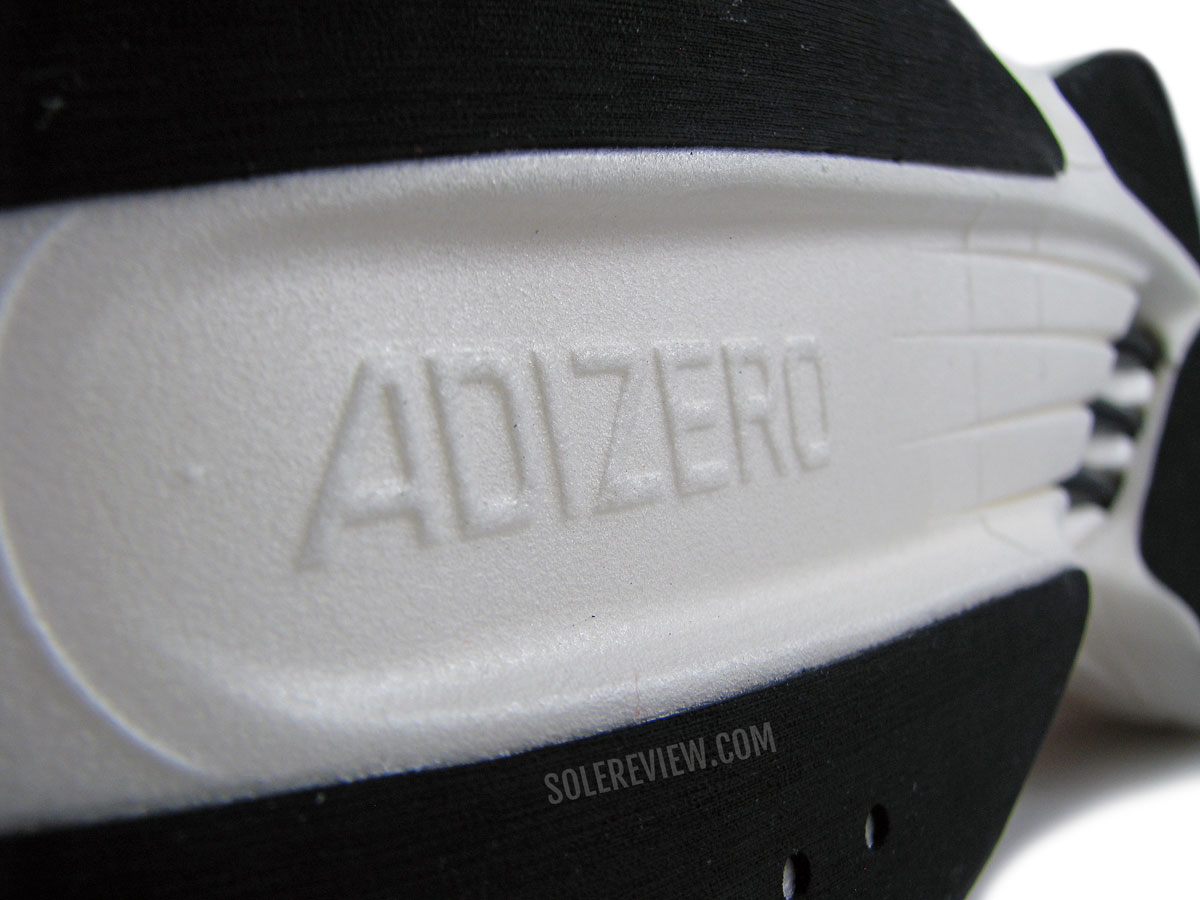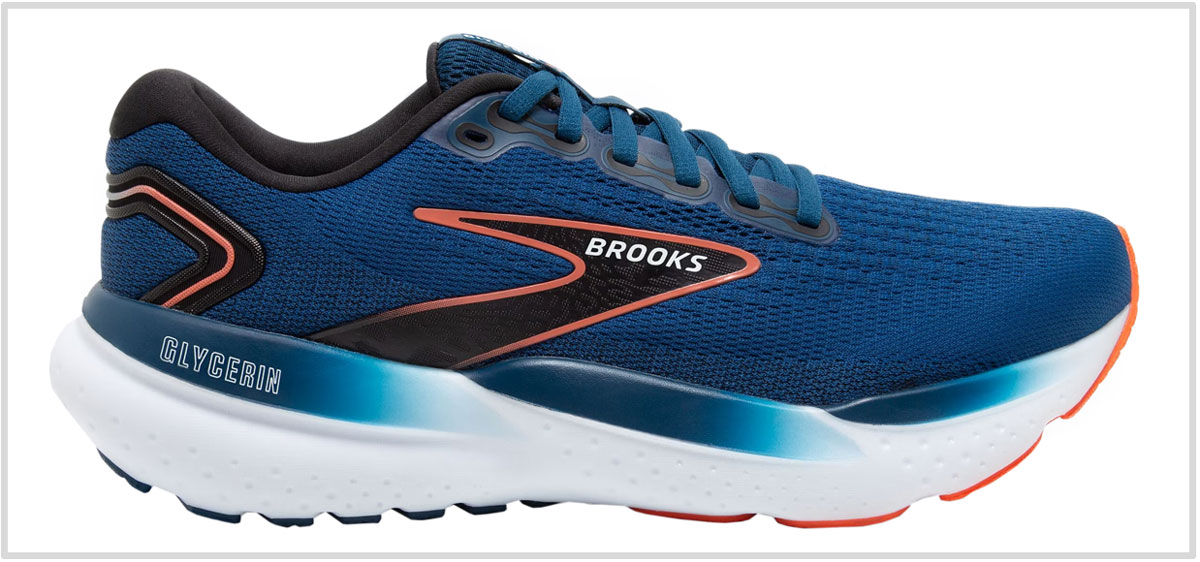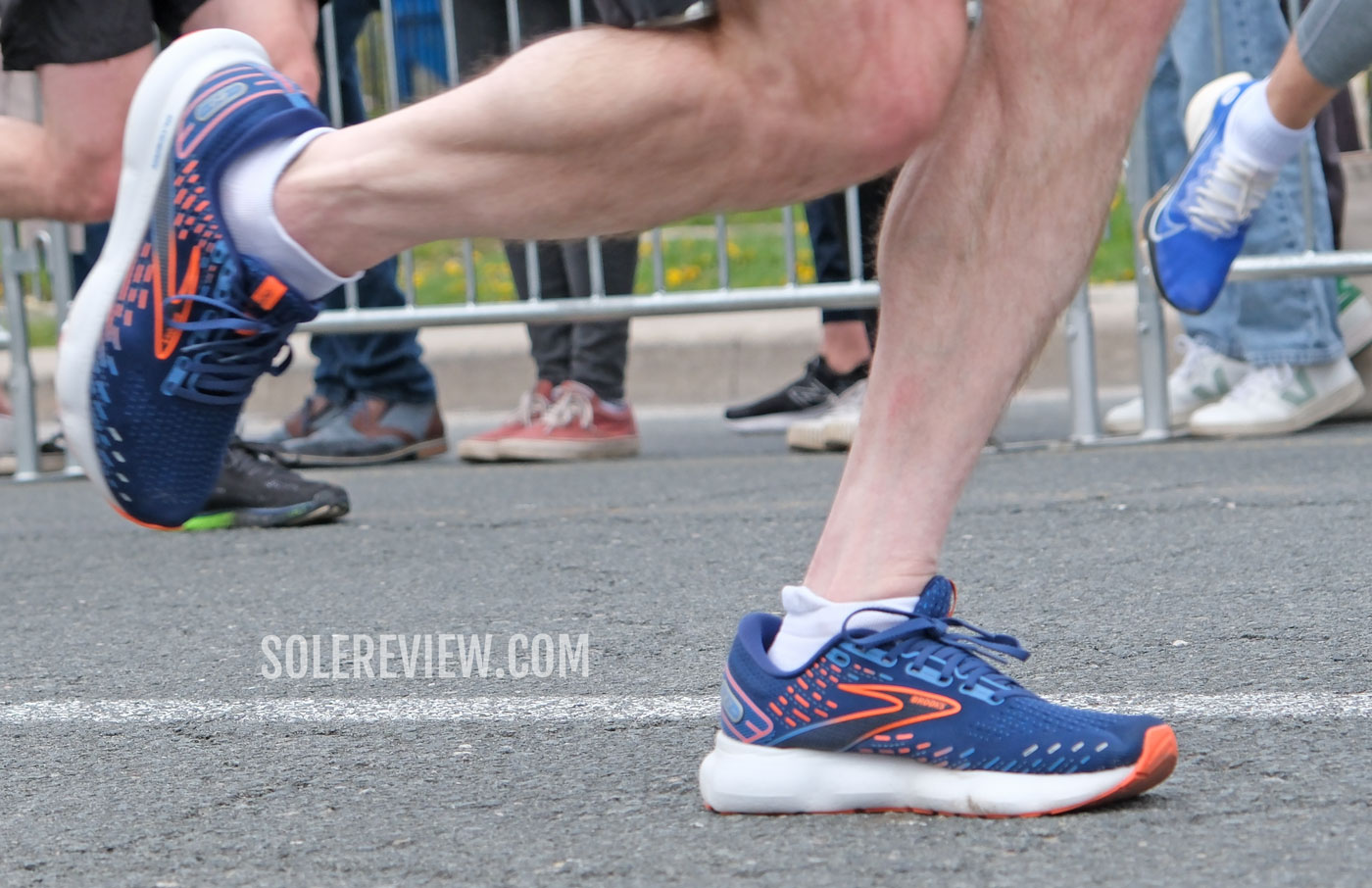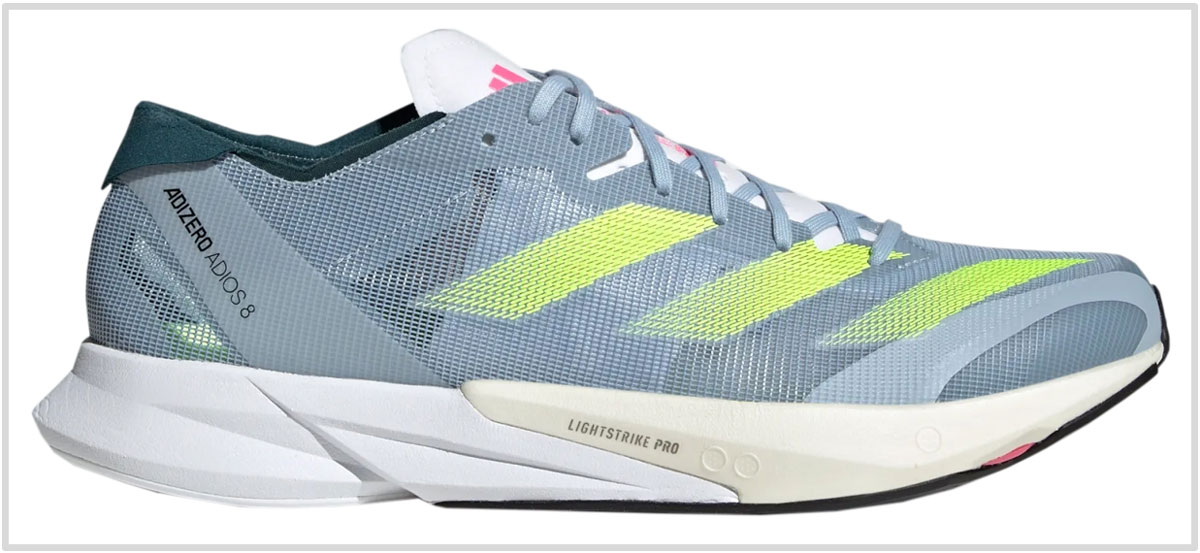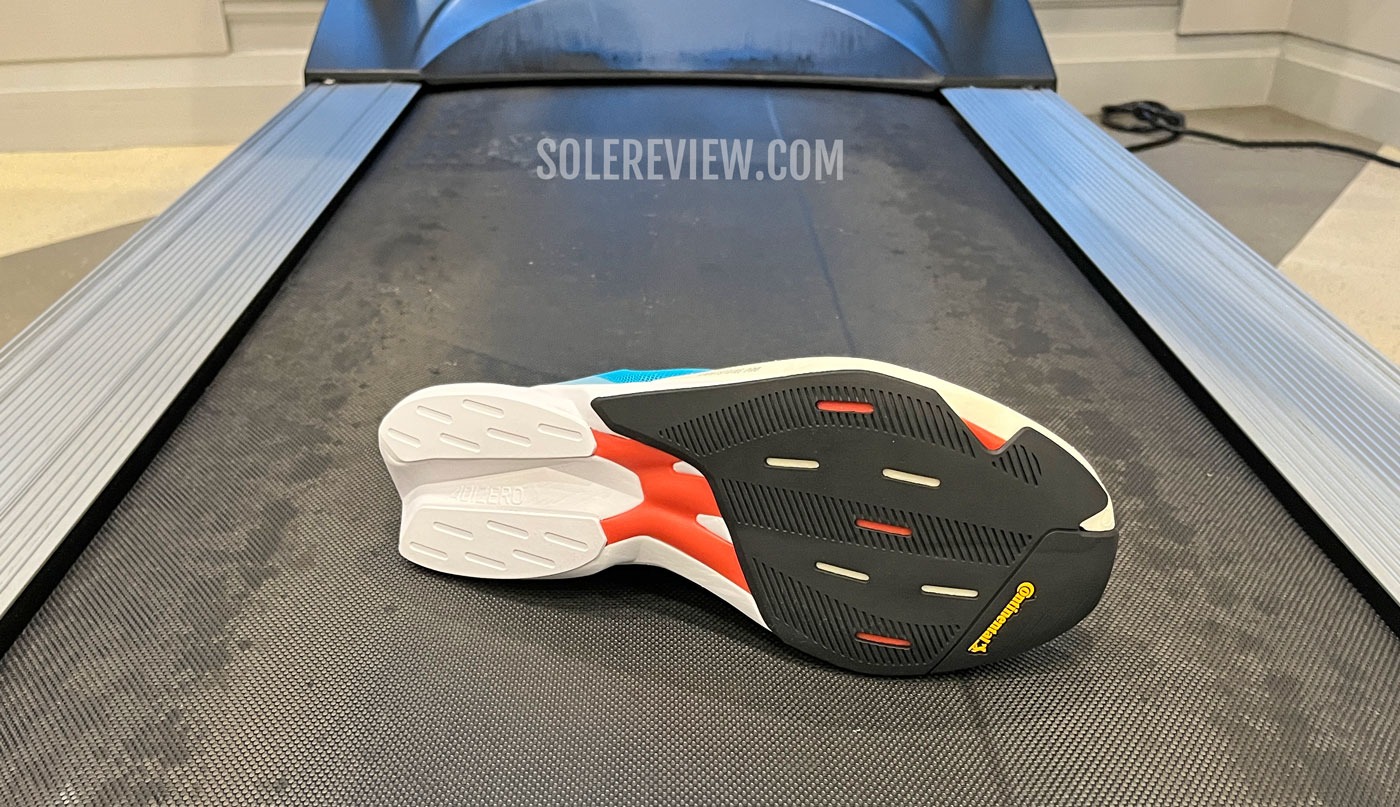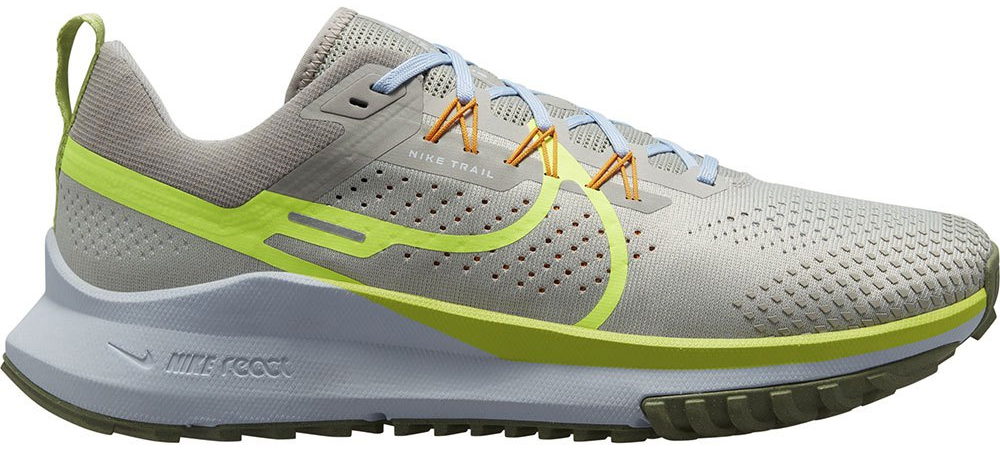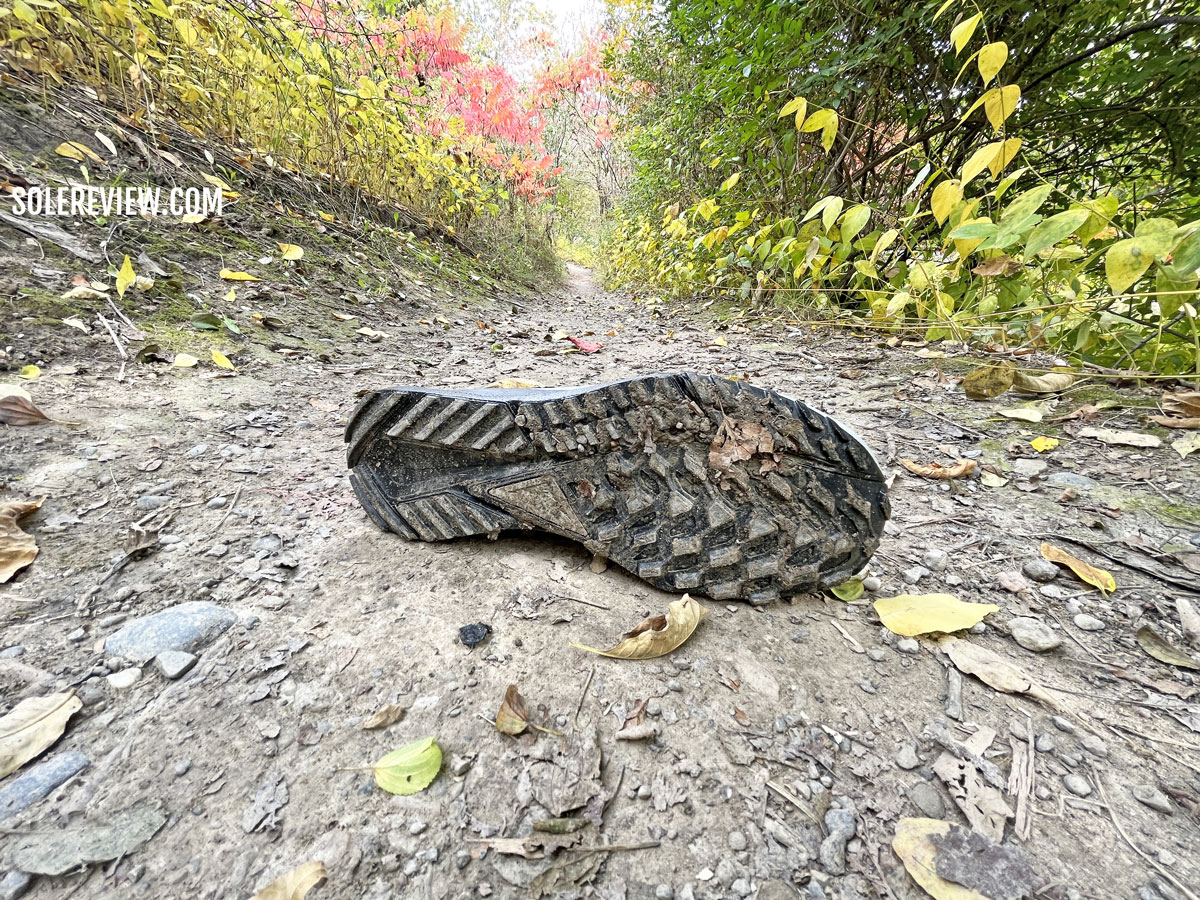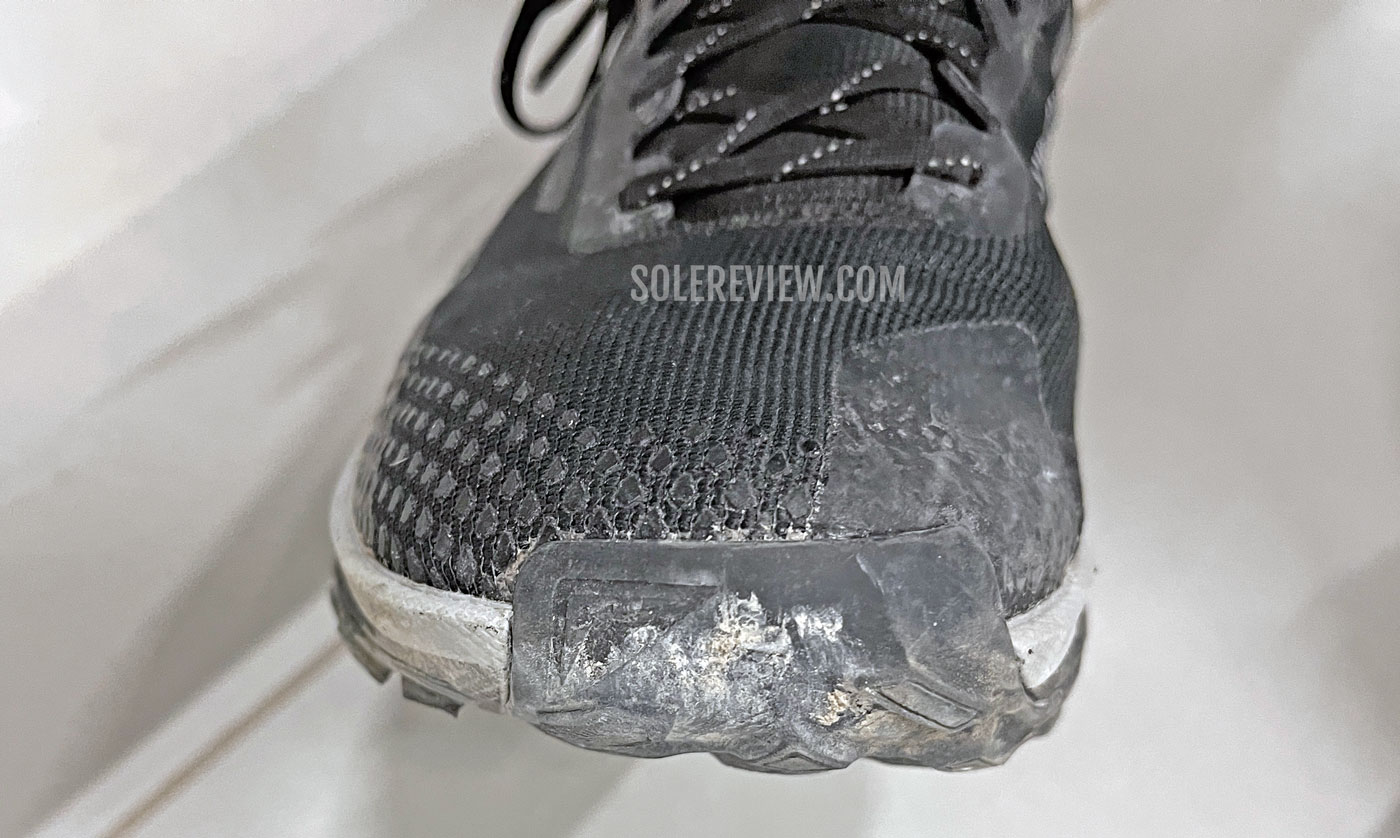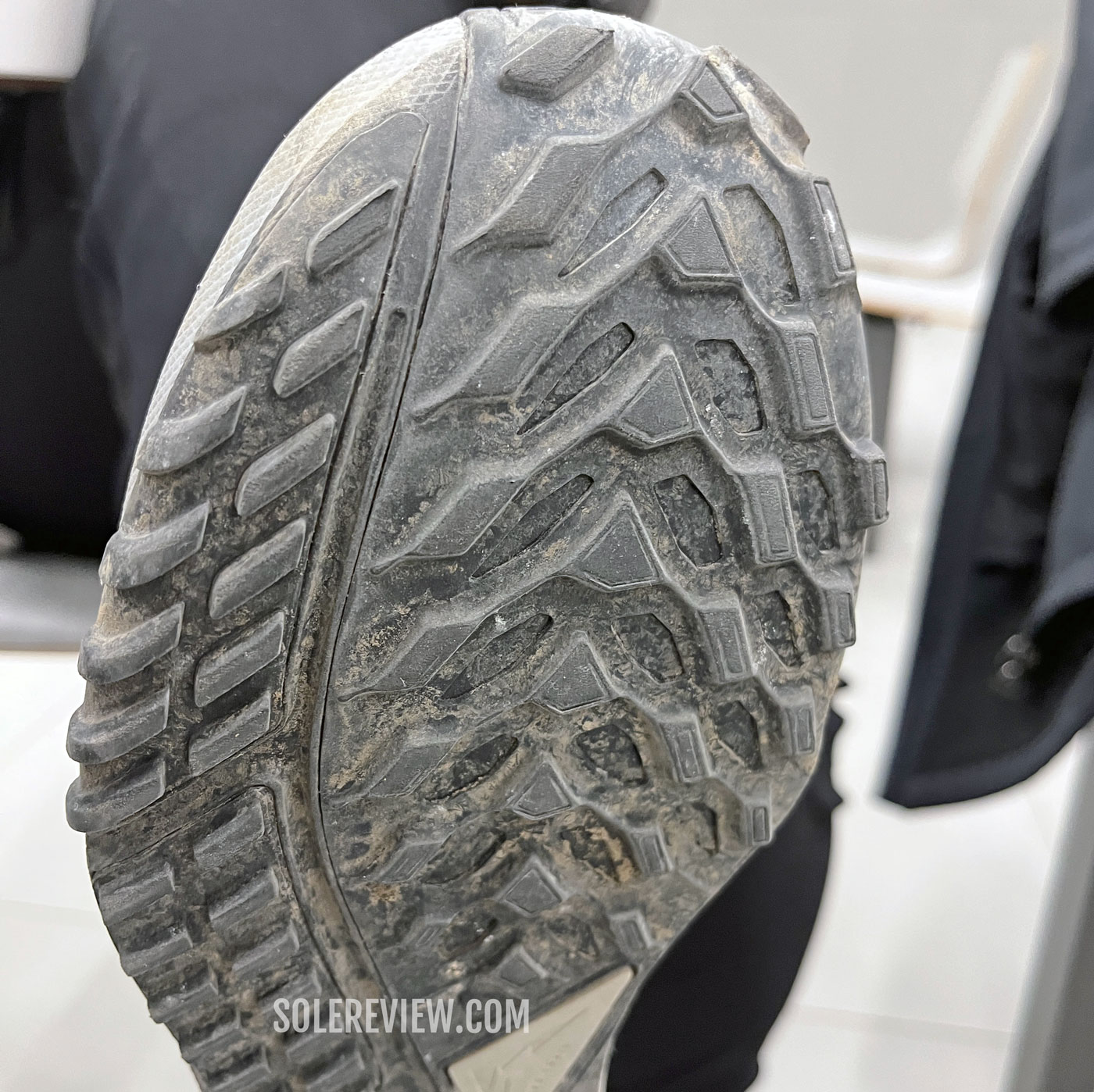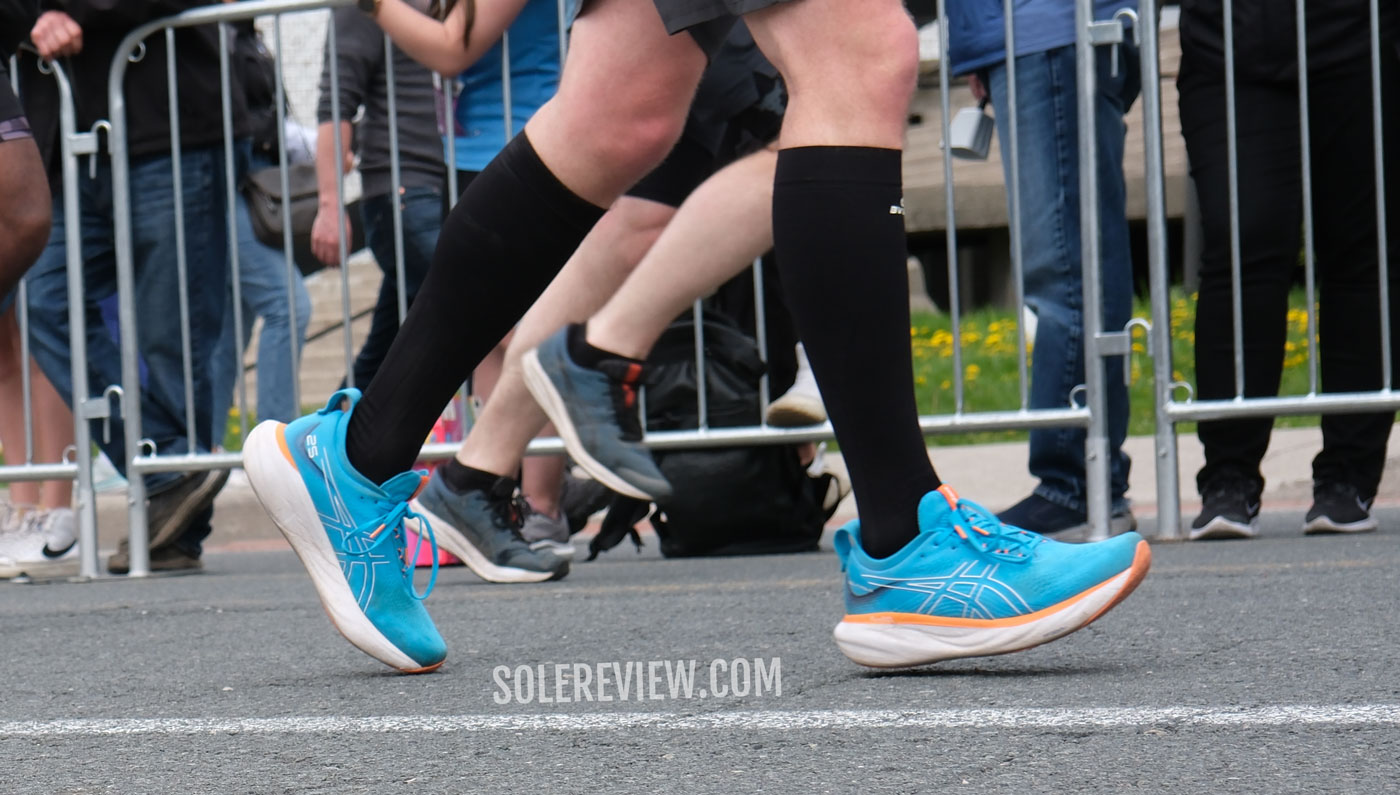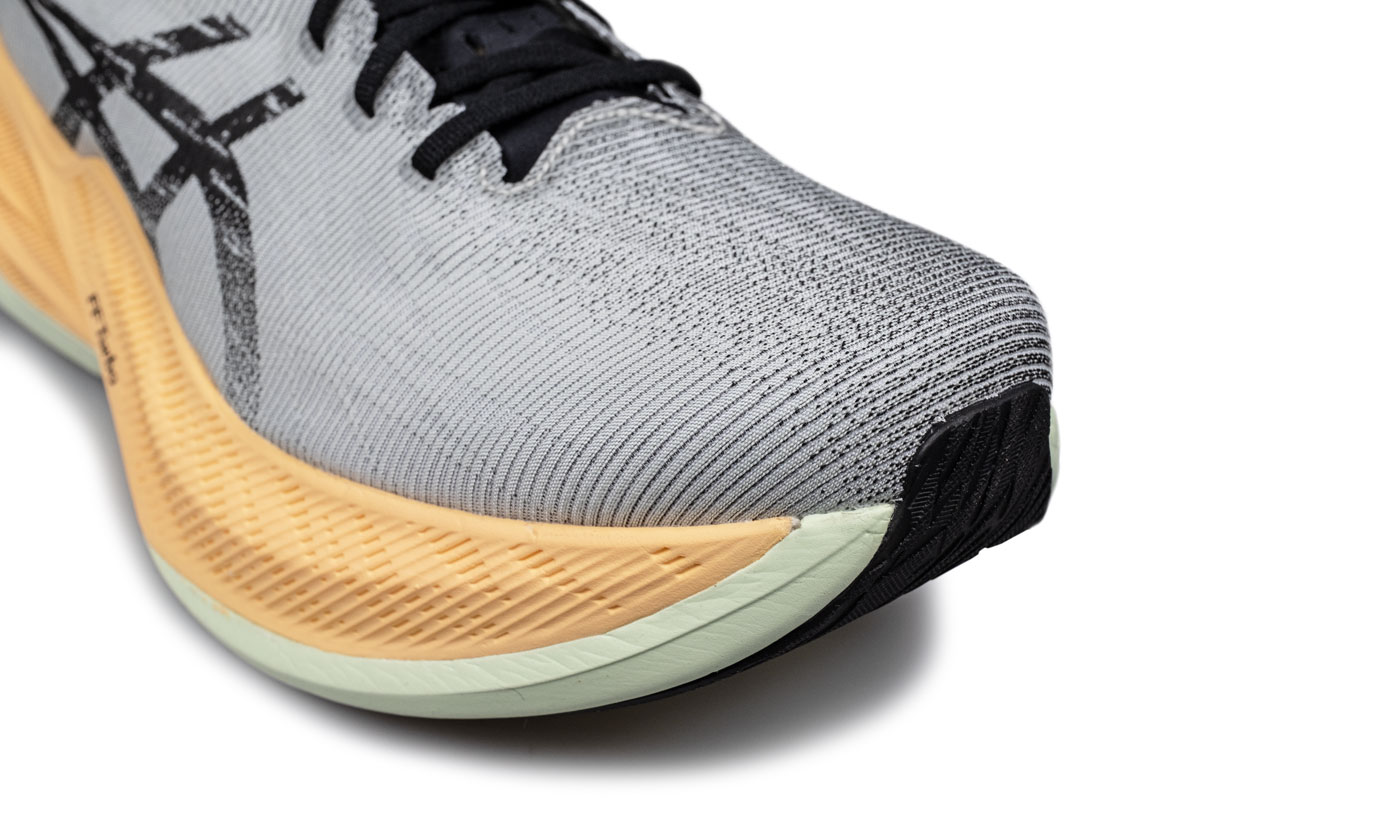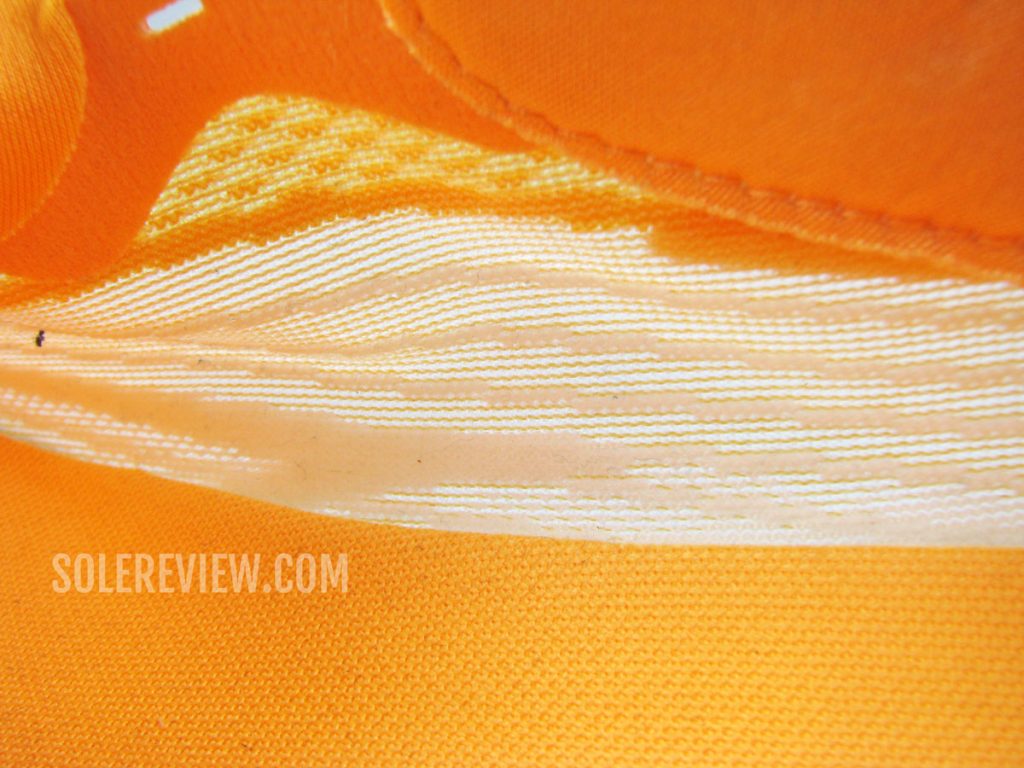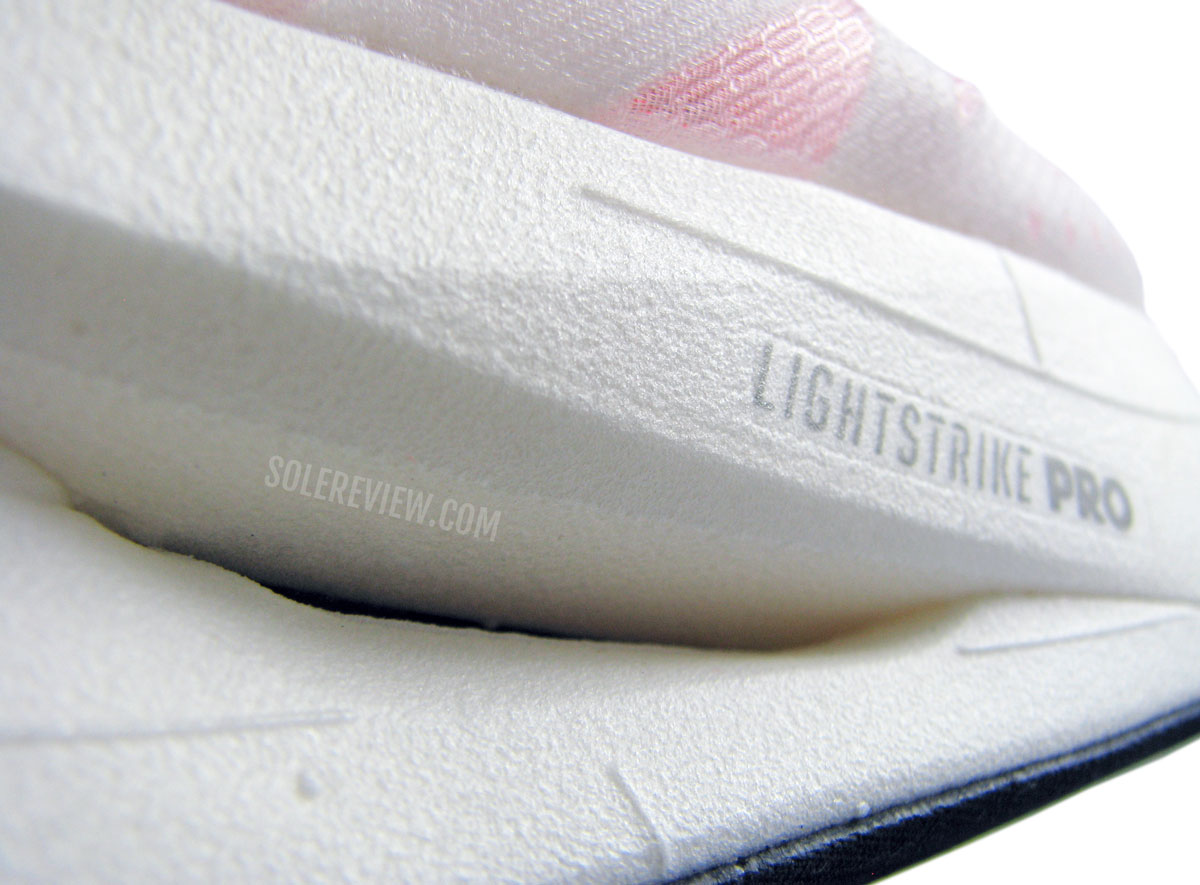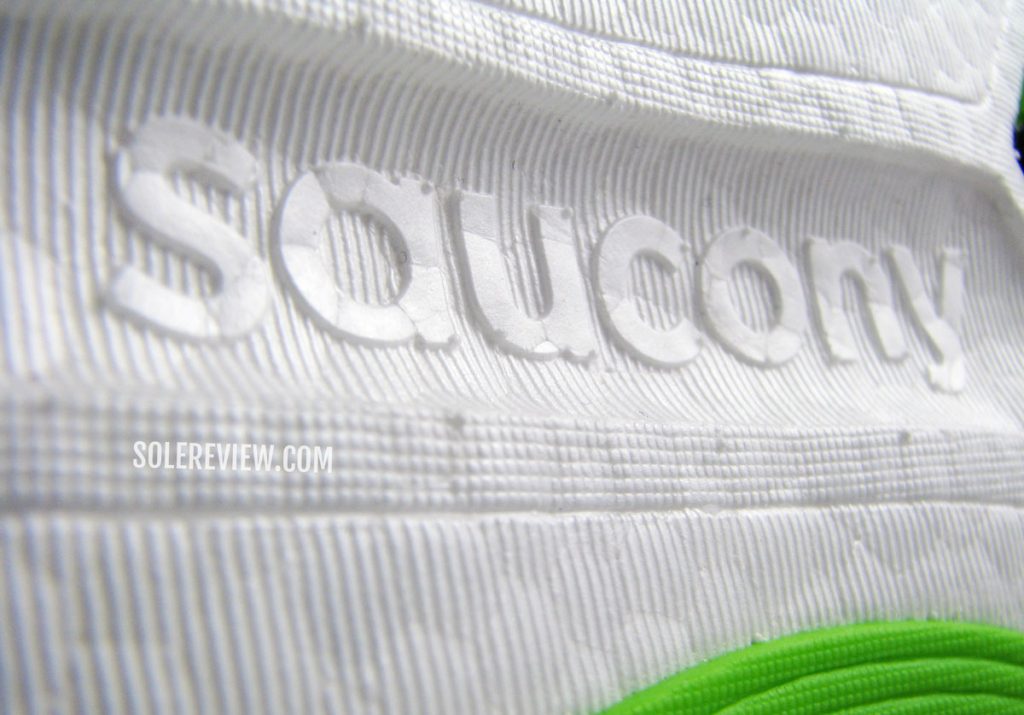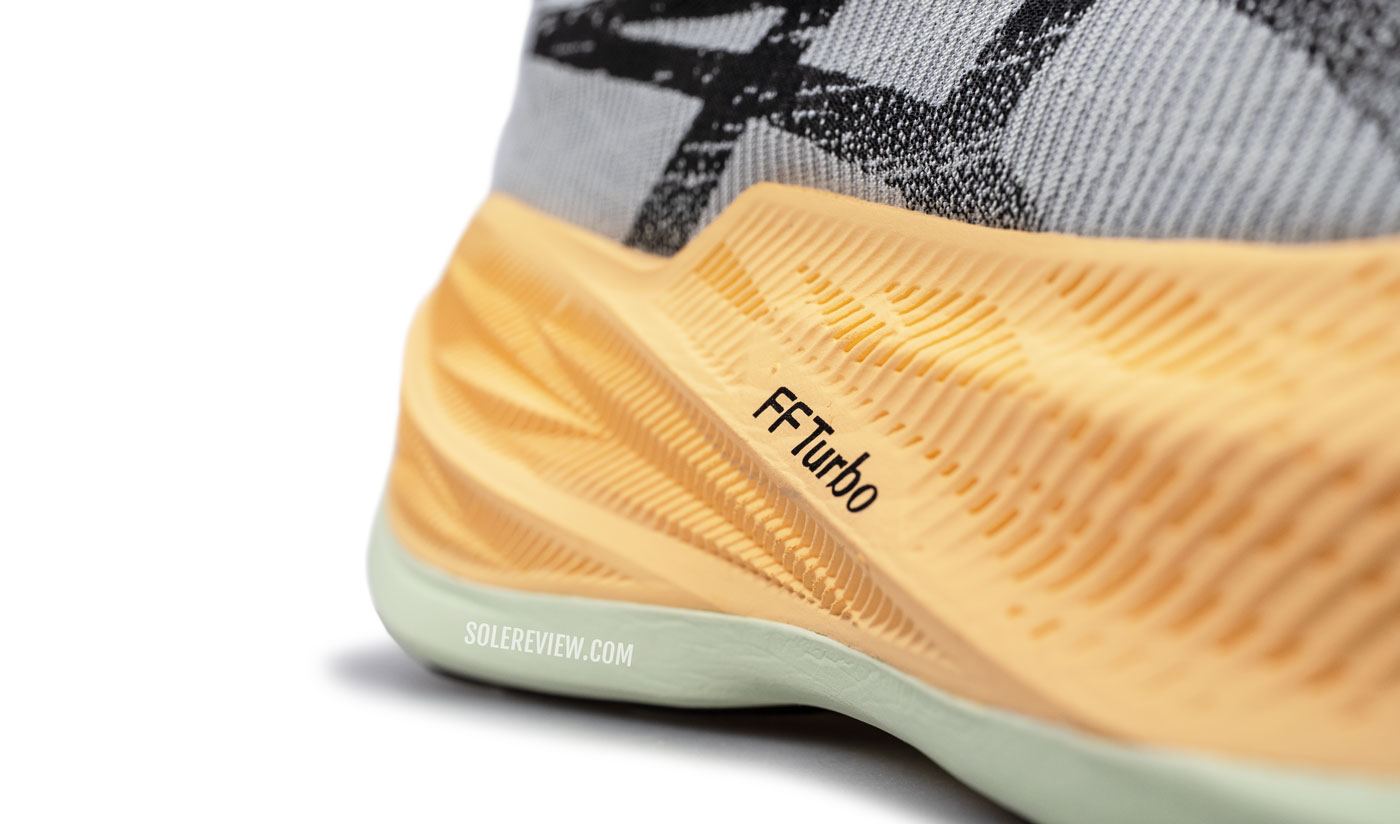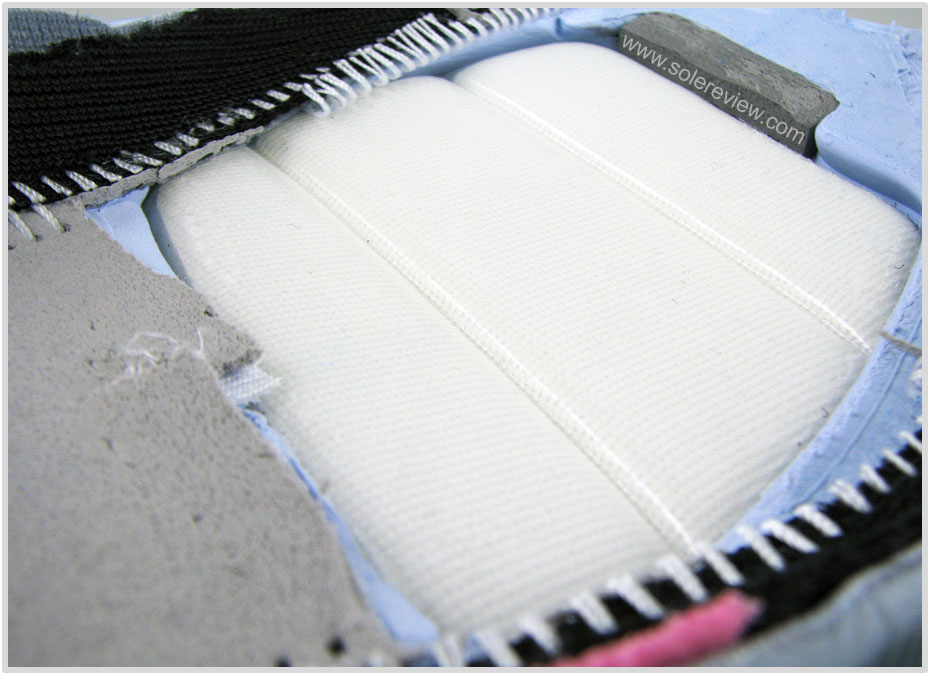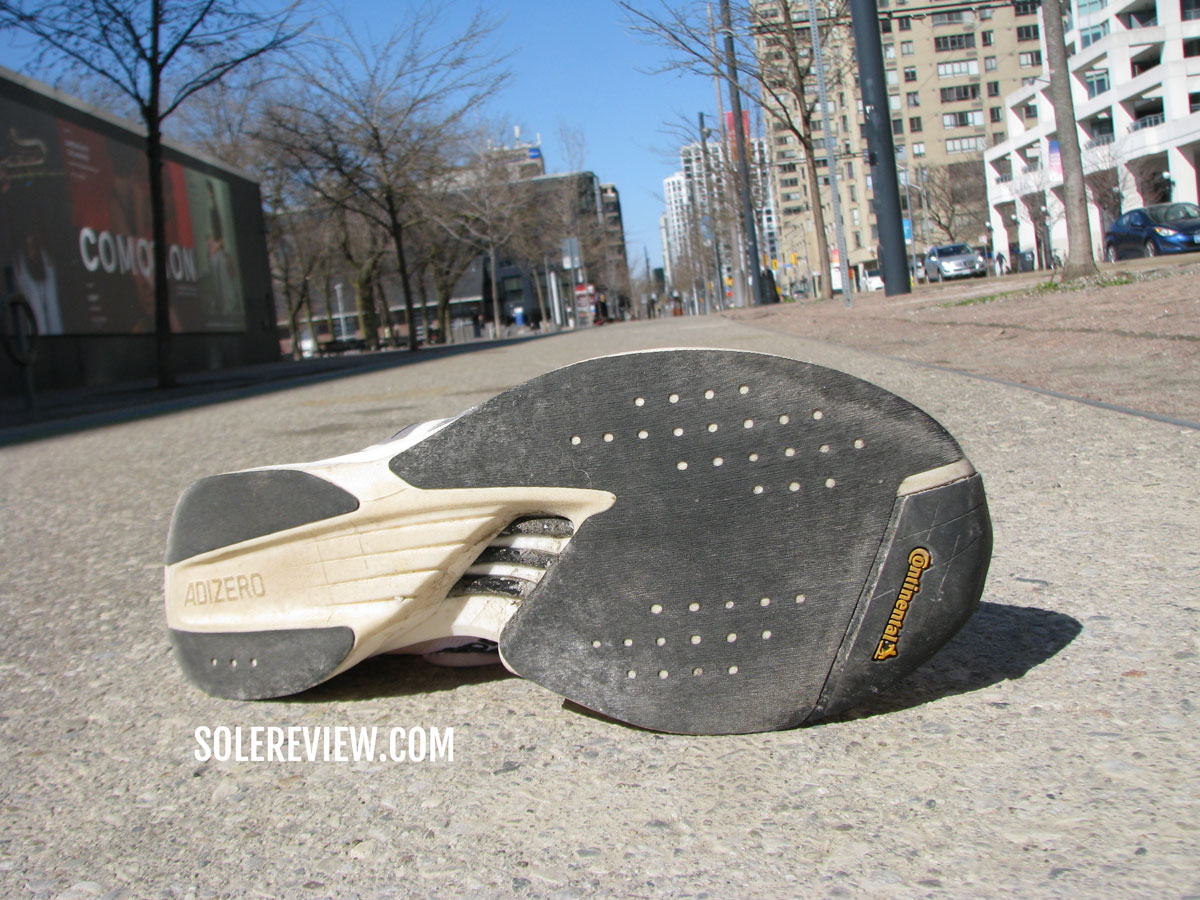This article has been updated with current models for March 2024. The Asics Nimbus 25, Brooks Glycerin 20, and Saucony Ride 16 have been replaced with their updated versions. Except for the narrower ‘B’ width, the women’s models are almost identical to men’s.
In this product guide:
- 1. Factors to consider
- 2. Durable long-distance trainer: Asics Superblast
- 3. Durable long-distance trainer: Saucony Triumph 21
- 4. Durable trainer with a plush midsole: Asics Nimbus 26
- 5. Durable everyday trainer: Saucony Ride 17
- 6. Durable everyday trainer: Nike Pegasus 40
- 7. Durable marathon shoe: adidas adios Pro 3
- 8. Durable trainer for heavy runners: Brooks Glycerin 21
- 9. Durable 5K and 10K racer: adidas adios 8
- 10. Durable trail running shoe: Nike Pegasus Trail 4
1) Durable long-distance trainer: Asics Superblast
Sure, the Asics Superblast is a durable running shoe. But that’s not what has made it one of the most popular releases in recent times.
Our review explained what makes the Superblast so good. Its 8.4-ounce weight gives an excellent cushioning-to-weight ratio, since most of the ride comfort is delivered by the thick Flytefoam Turbo midsole.
It’s also a ‘fast’ shoe that is comparable to Carbon-plated marathon racers. Despite the lack of a plate, the firmer midsole base and rocker profile allow quick transitions to happen. At the same time, the Superblast is a very forgiving shoe, thus making it equally suited for easy runs and daily training.
The upper is snug, as most recent Asics shoes are. That being said, the upper avoids excessive tightness and has a true-to-size fit profile.
There isn’t a lot of outsole rubber covering the midsole. However, the outsole-midsole relationship is what makes the Superblast long-lasting. The spaced-out rubber lugs flex with the Flytefoam midsole rather than taking direct hits during landings. The Flytefoam midsole is also resistant to long-term cushioning loss.
2) Durable long-distance trainer: Saucony Triumph 21
The Saucony Triumph 21 uses the same midsole and outsole as the Triumph 20, so both shoes will have equal lifespans. Key to their durability is the Pwrrun+ midsole and hard-wearing rubber outsole.
Saucony’s Pwrrun+ foam is made of the same ingredient as adidas Boost. It’s an expanded Polyurethane foam with high resistance to creasing and deformation over time. The rubber outsole perfectly complements the long-lasting midsole.
This time, the Saucony Triumph’s upper is fully sleeved, thus effectively making the upper double-layered for better longevity.
As a running shoe, the Saucony Triumph 21 offers a high level of versatility. Our detailed review explains why.
The highly-cushioned midsole makes short work of everyday runs, and is comfortable enough for a marathon. The resilient Pwrrun+ midsole and semi-rocker profile also benefit the transition quality, so even 4:30 min/km (7 min/mile) speeds are in its wheelhouse.
3) Durable trainer with a plush midsole: Asics Nimbus 26
Over the last couple of years, Asics has built a reputation as a maker of durable running shoes.
The Flytefoam midsole material (an EVA foam blend) retains its cushioning over a few hundred miles, and the new outsole design is better at distributing wear and tear.
The relatively flat design of the rubber lugs makes them long-lasting. Wear and tear is slow to occur, as the lugs flex and work together with the midsole.
As a running shoe, the Nimbus 26’s ride delivers a plush and comfortable ride with a peppy feel. It’s an excellent daily trainer, and its long-distance capabilities depend entirely on how hot or cold the climate is.
The upper runs slightly warmer than comparable trainers, so the Nimbus 26 may get too hot during peak summers.
In more ways than one, the Nimbus 26 is similar to the Nimbus 25.
4) Durable everyday neutral trainer: Saucony Ride 17
Nobody should be surprised to see the Ride 17 on this list; its new Pwrrun+ midsole adds miles to its lifespan.
Unlike the EVA foam sole used on the Ride 15 and 16, the Ride 17’s midsole is built using the long-lasting Pwrrun+. It’s the same material that the Saucony Triumph 21’s midsole is made out of.
The outsole geometry also helps. Most of the rubber lugs are nearly flush with the midsole, so they don’t take direct hits from the footstrike and the transitions that follow.
The lightweight upper is backed with an inner sleeve for superior structural integrity.
5) Versatile daily trainer: Nike Pegasus 40
Unlike many recent Nike releases, the Pegasus 40 doesn’t use the newest cushioning tech.
Its compression-molded React midsole delivers a cushioned yet muted ride character. Zoom Air is the only ‘special’ part of the Pegasus 40, but it feels dated in light of all the new-age midsole materials.
That criticism aside, the Pegasus 40 gets its fundamentals right. This is an ‘easy reach’ everyday trainer with just the right balance of cushioning comfort and support. Our review explored the Pegasus 40’s capabilities in depth.
This neutral trainer is also very durable – thanks to the React midsole, Zoom Air, and the thick rubber outsole. And it’s not just about the quality of rubber. The outsole geometry also plays a role in extending the shoe’s lifespan.
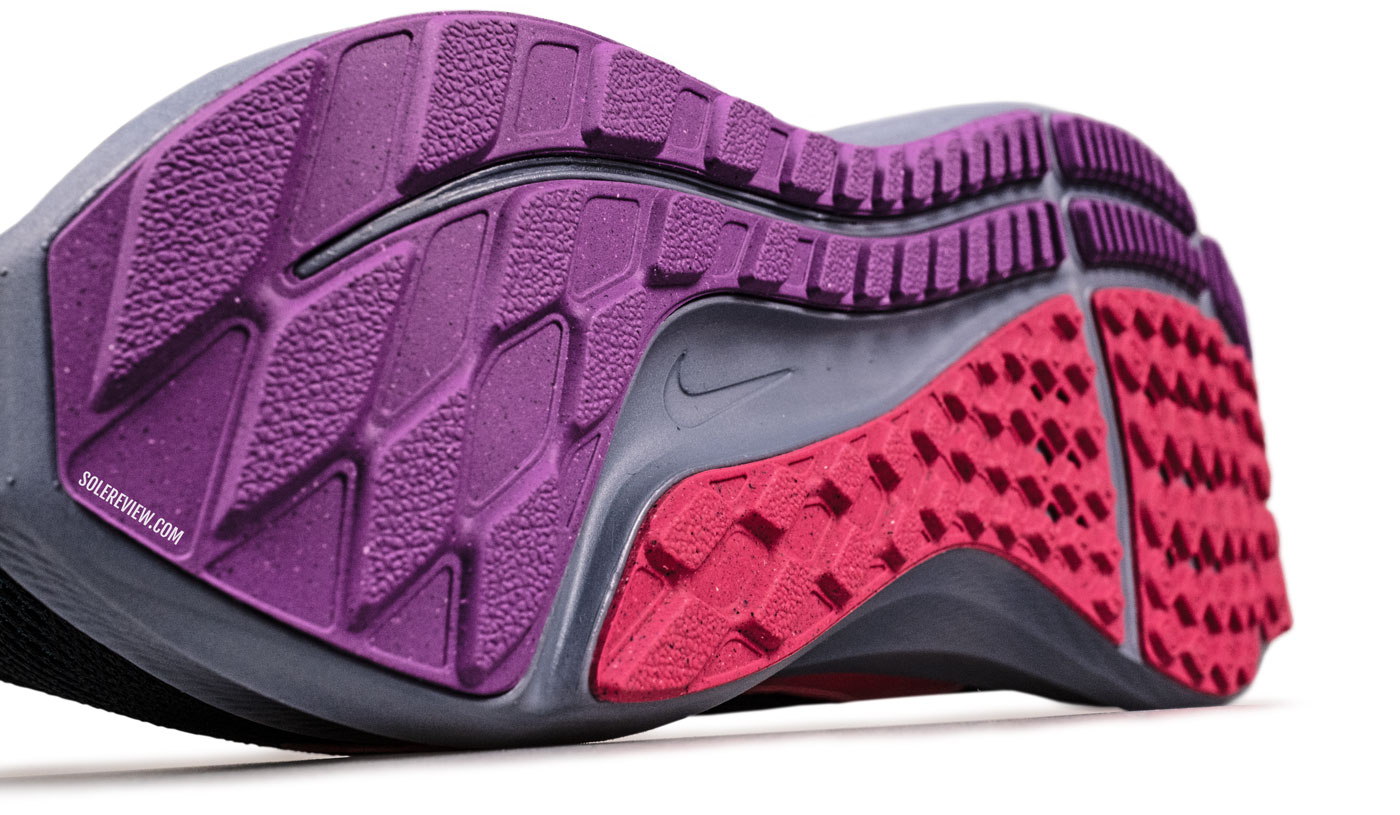
The ‘crash rail’ geometry of the Nike Pegasus 40’s outsole is excellent at distributing wear and tear.
The outsole lugs ‘pistons’ into the foam during the gait cycle to minimize damage, but also provide durable traction.
The Pegasus 40 shares its sole with the 39, so both versions are equally durable. The sleeved construction of the engineered mesh upper is resistant to premature failure.
6) Durable marathon racer: adidas adios Pro 3
Within the high-performance marathon racer category, the adidas Adios Pro 3 stands out due to three reasons. It doesn’t use a soft PEBA midsole, nor does it have a Carbon plate.
Instead, the Adios Pro 3 extracts its cushioning through a set of articulated ‘Energy Rods’ inside a responsive Lightstrike Pro midsole.
Lastly, the Adios Pro 3’s outsole coverage is generous when compared to competing shoes like the Nike Vaporfly and Saucony Endorphin Pro/Speed/Elite. The brushed texture of the Continental rubber outsole lacks any lugs either.
These unique components make the adios Pro 3 more durable than the rest. The Lightstrike Pro foam is much better at retaining its shape and cushioning as compared to PEBA foam variants. The combination of the outsole coverage and compound (Continental rubber) means that you’ll be spared the durability concerns that shoes like the Vaporfly 3 suffer from.
On the road, the adios Pro 3 delivers the sweet spot of mileage-friendly cushioning. It’s not too soft nor too firm, and yet sufficiently comfortable for a marathon. The Energy rods and the inflexible rocker forefoot make the transitions speed-friendly.
7) Durable trainer for heavy runners: Brooks Glycerin 21
At the heart of the Glycerin 21’s cushioning is the DNA Loft V3 – a foam without much ‘give’ or compression. For this year, Brooks has made the Glycerin 21’s foam softer than the Glycerin 20 for greater ride comfort.
The thick midsole does an excellent job of supporting the foot while providing impact protection. The ride stability makes the Glycerin 21 great for heavy runners, all while making the cushioning last longer. Deep creasing or cushioning loss is non-existent on the Glycerin.
The Glycerin 21’s rubber outsole is abrasion-resistant and protects the DNA Loft V3 midsole from impact forces.
8) Durable racer for 5K and 10K runs: adidas adizero adios 8
Despite being a low-profile road racer, the adidas Adios 8 isn’t light on durability-enhancing features.
The grippy Continental rubber outsole is the first layer of protection, as it shields the midsole from accelerated wear and tear.
The firm, dual-density midsole is also resistant to premature fatigue. The Lightstrike EVA rear midsole resists compression well, and so does the softer Lightstrike Pro insert under the forefoot.
And even though the upper uses a thin breathable mesh, the insides are reinforced with a supportive frame for durability. High-wear areas like the toe bumper, heel, and lacing panel are layered with synthetic suede.
The Adios 8 went through a comprehensive redesign, and the result is a softer ride and roomier upper than the Adios 6 and 7. That makes the Adios 8 less harsh on the feet during a road race, but without compromising its speed-friendly character.
9) Durable trail running shoe: Nike Pegasus Trail 4
Adherence to design best practices has a positive outcome on the lifespan of any running shoe.
The Nike Pegasus Trail 4 is a good example. Its thick rubber outsole protects the React foam midsole, and the rounded lug profile slows down the shredding process. Nike’s React foam – the material that the Pegasus Trail 4 uses – is also resistant to fatigue.
This isn’t a hardcore trail performance product. The Pegasus Trail 4’s comfortable ride and rugged outsole are on their best behavior when on moderate trails and hikes. That was true for the first version of the Pegasus 36 Trail as well. Our detailed review of the Pegasus Trail 4 explores its road and trail capabilities.
Having said that, the comfortable and secure upper is sufficiently equipped for the outdoors. The outsole also acts as a protective toe bumper, and the forefoot is reinforced with high-density printing.
There are two versions of this shoe – the standard variant and the waterproof Gore-Tex model. The waterproof version is more versatile, but it’s not as breathable as the regular Pegasus Trail.
HOW WE SELECTED THE SHOES IN THIS GUIDE
Three factors determine the shoe’s potential durability or the lack thereof:
1. The upper: Decoding the estimated lifespan of the upper is difficult for several reasons. At a very basic level, the materials used – be it the mesh or synthetic overlays – must flex and have a certain amount of thickness. But what’s of greater importance is the working relationship between the materials.
Even an upper made of thin materials can be durable – as long as it gets a few things right. The first is the absence of friction between the materials, and the second is the lack of pressure points. This can be made clear by a few examples.
If the big toe rubs the area where the stitched toe-bumper (if applicable) and mesh meet, there is a chance that a tear could develop over time.
This often happens if the toe-box mesh is thin and lacks an inner lining. However, this is becoming less of a concern since newer running shoes are based on knit uppers with internal bumpers. But every once in a while, an imperfect shoe with a fragile upper shows up – the New Balance Fuelcell Rebel 2 was a good example.
Certain brands rely on a fabric backer as a reinforcement, and you can feel this by inserting your hand under the upper. Other shoes skip the lining and rely on a thicker base material or an inner sleeve instead.
Some shoes use stiff materials around the last two rows of lacing. We’ve come across cases where this portion tears prematurely due to friction. There are a few cases of the heel lining coming apart, but that’s usually due to improper (shorter) sizing.
Lacing eyelets rarely tear these days. But if you want to make sure that this doesn’t happen, turn over the lacing panel to check for reinforcement.
The upper durability is also affected by how well (or not) the shoe fits; it is important to buy the right size and have enough room in the front. In many cases where the heel lining tears too soon may indicate a short size.
Lastly, high-end uppers like the kind used on the adidas adizero line-up are tough as nails – even if they seem paper-thin.
2. The midsole material: The lifespan of the midsole depends on three things – the compound, the density (firmness, softness), or a combination of both.
Polyurethane, PEBA, and SBES-based foams last longer than EVA (Ethylene Vinyl Acetate) ones. Polyurethane (PU) is used in two forms; a poured kind like the Puma Ignite and Brooks Levitate, or the popular variety known as E-TPU.
These materials have a higher resistance to abuse from repeated compression and temperature, making them extremely durable. E-TPU is commonly used as adidas Boost or the Saucony Pwrrun+.
As for the adidas Lightstrike Pro, we don’t know what exactly it’s made of. That said, it’s very resistant to compression fatigue – unlike the crease-prone PEBA foam. The Saucony Endorphin Elite also uses a similar material as the adidas Lightstrike Pro.
Standard Polyurethane midsoles can be distinguished from EVA with a few visual cues; read this solereview article for more. The Brooks Levitate also uses a Polyurethane midsole.
Saucony uses PEBA (Poly Ether Block Amide) foam for its Endorphin Speed and Pro models. The feedback on Pwrrun PB’s durability has been very positive so far.
EVA midsoles are ubiquitous and form the majority of running shoe midsoles. Though not as durable as newer foams, most last reasonably long.
That said, there are a few things to keep in mind. The softer the EVA midsole, the shorter its life. A softer-density EVA midsole is more likely to lose its cushioning properties sooner.
Besides the firmness, midsole inserts such as Nike Zoom Air (like the one inside the Pegasus 40) increase cushioning durability.
3. The outsole: In the majority of cases, the rubber outsole is the first point of failure. The upper and midsole may be in perfect condition, but the outsole could get shredded into wafer-like thinness after a few hundred kilometers.
Three things matter when it comes to the outsole life – the rubber material, the layout/geometry, and how well it works together with the midsole.
A running shoe that uses only hard rubber for its outsole will outlive a model that uses a mix of soft blown rubber (forefoot) and a harder rubber under the rearfoot.
Generally speaking, compounds like Saucony’s XT-900 rubber and adidas Continental are more durable than regular rubber.
A flat and full-coverage outsole will outlast a design that features prominent lugs. Pointy outsole lugs take the brunt of the wear and tear – as opposed to a flat profile outsole that spreads the wear and tear over a wider area.
Using a hard rubber compound with a flat profile usually delivers a higher mileage. We’re always surprised at the extent of the positive effect a flat outsole has on durability – even with soft rubber.
At times, the outsole lifespan depends not on the material but on how it works together with the midsole. The Asics Superblast is a good example of what we mean.
Its thin outsole flexes along with the soft midsole and slows down the rate of wear and tear. Our readers have unanimous praise for the Asics Superblast’s high mile-per-dollar value.
The shoes in this guide satisfy most of the selection criteria. The adidas Continental rubber outsole used to be the only show in town, but that time has passed. Other brands have caught up and now offer a wide selection of durable running shoes.
Under normal usage conditions, these shoes will last at least 400 miles. Unless you’re a heavy runner living in a warm country, most of these shoes will give you 600 miles (and beyond) without any degradation in performance.
Do you own any of these shoes? Improve this review by sharing your insights – submit a review here.

